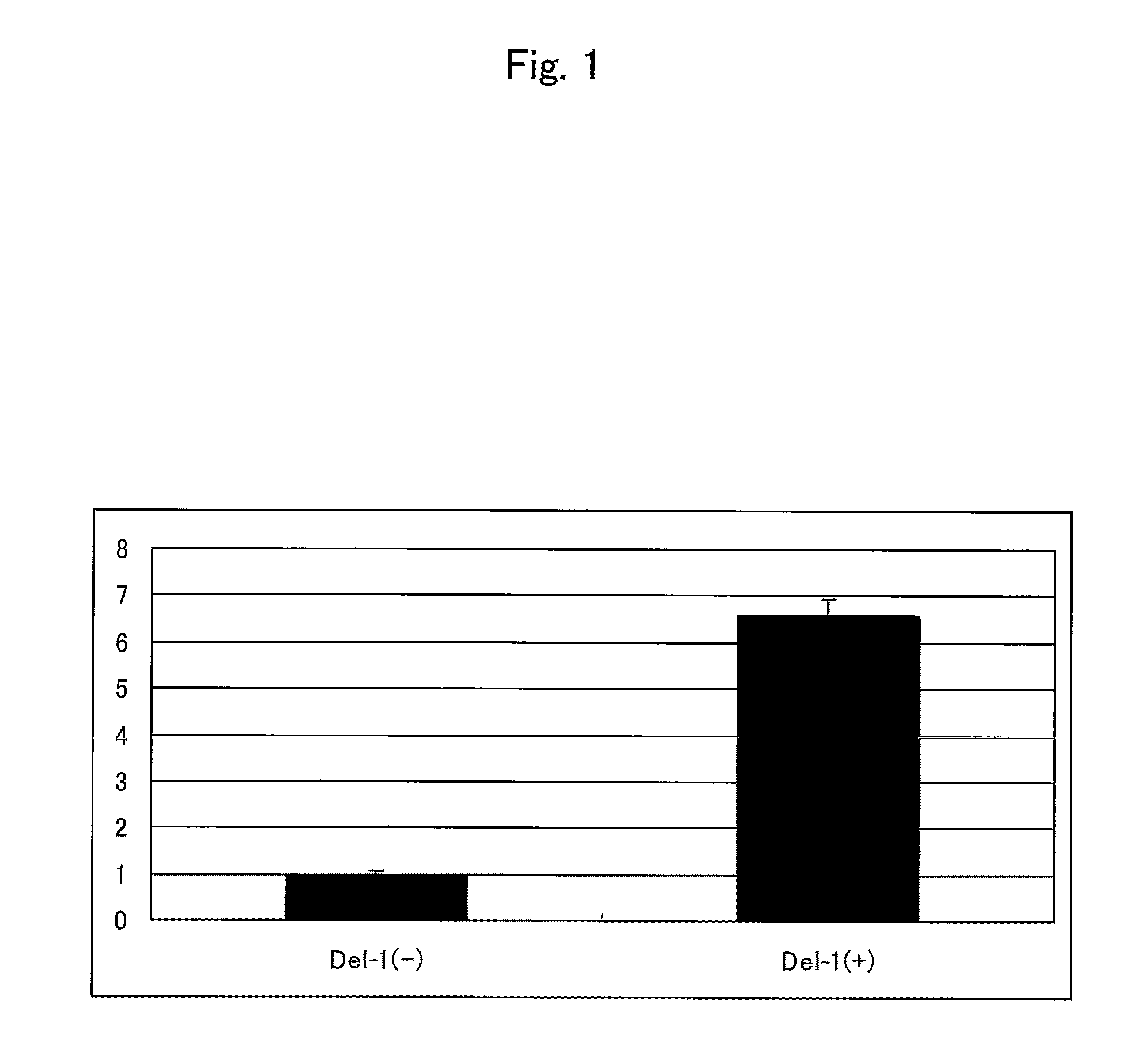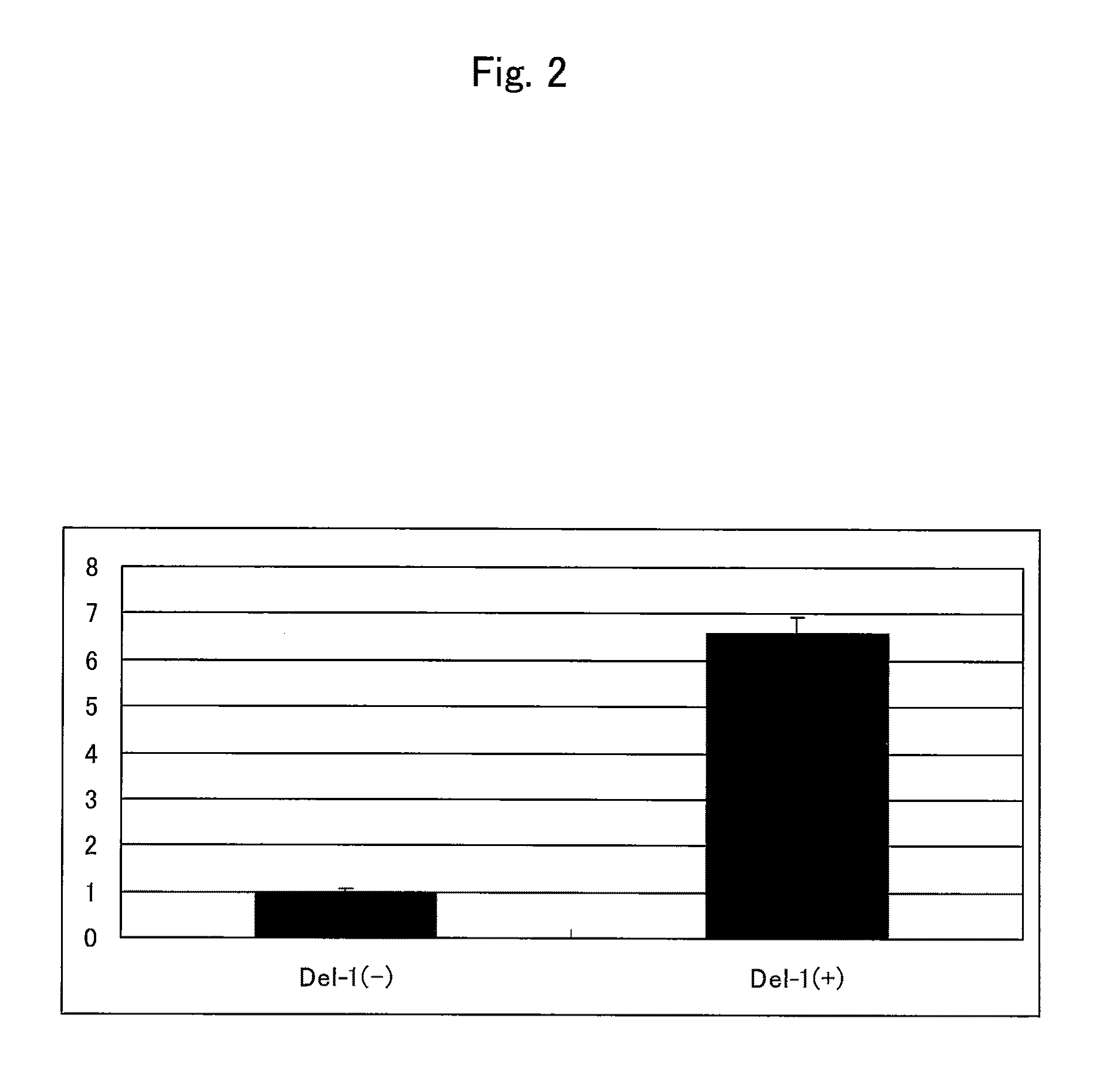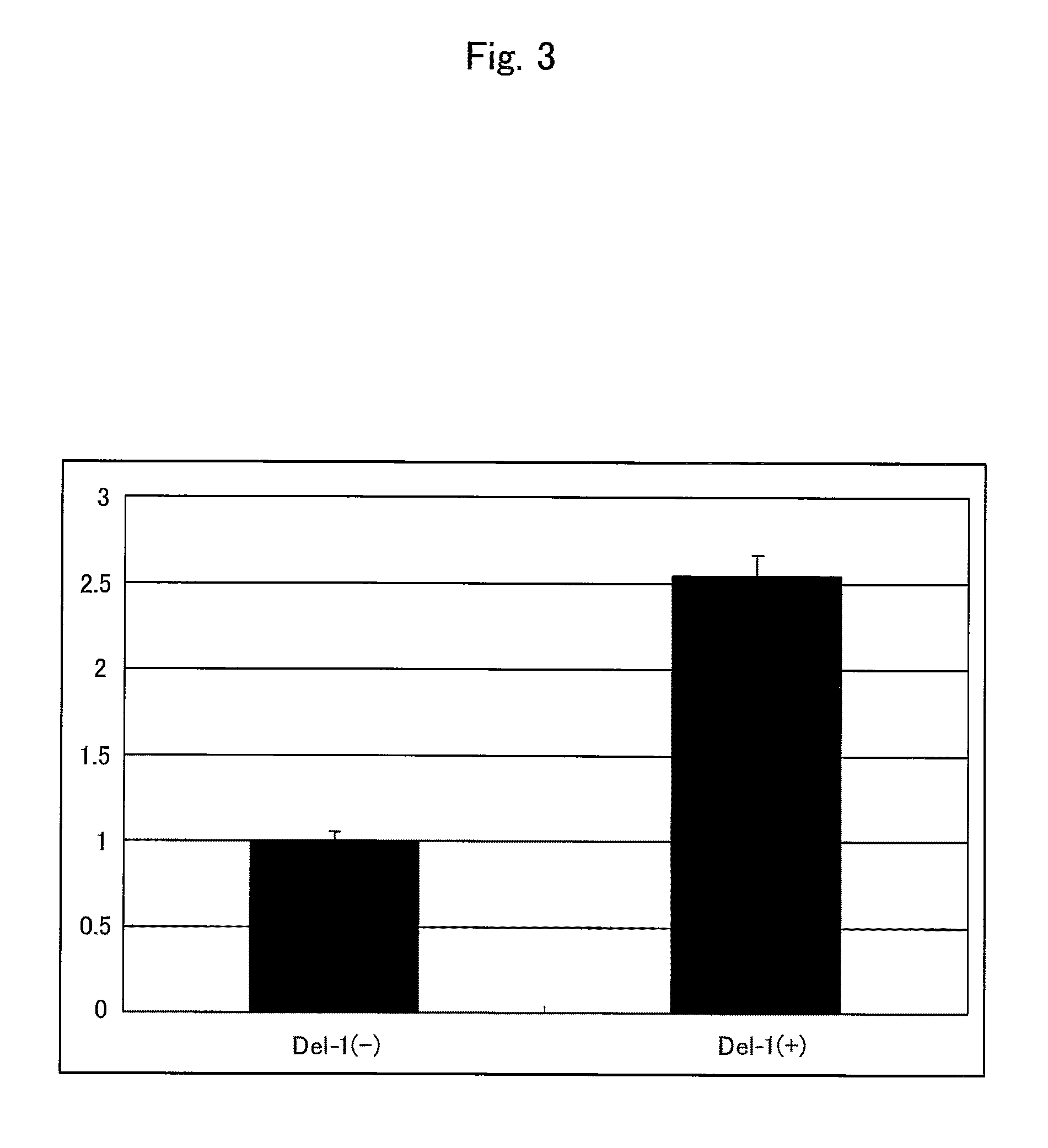Auxiliary reagent for gene transfer
- Summary
- Abstract
- Description
- Claims
- Application Information
AI Technical Summary
Benefits of technology
Problems solved by technology
Method used
Image
Examples
example 1
Increase of Transfer Efficiency in Gene Transfer Method Using Polyplex Method
[0052]Experiment of transfer of lacZ gene into a Pro5 cell (vascular endothelial cell) was carried out using a gene transfer reagent jet-PEI (Polyplus Transfection) in which linear polyethyleneimine (PEI), which is a cationic water-soluble polymer, is based.
[0053]Firstly, using a pAPtag-4 vector (GenHunter), an expression vector, which includes a DNA encoding a fusion protein of alkaline phosphatase and Del-1 (excluding the signal peptide portion), was constructed as follows. The pAPtag-4 vector as used herein can transiently express a protein in which a signal peptide and alkaline phosphatase are fused to the N-terminus of a protein of interest by inserting a DNA encoding the protein of interest into a predetermined position.
[0054]An RNA was extracted from a mouse embryo on day 9 to day 12 after fertilization using TRIzol (Invitrogen Corporation). Using this RNA as a template, a reverse transcription react...
example 2
Increase of Transfer Efficiency in Gene Transfer Method Using Liposome Method
[0063]Experiment of transfer of lacZ gene into a Pro5 cell (vascular endothelial cell) was carried out using a gene transfer reagent Lipofectamine 2000 (Invitrogen Corporation) in which cationic lipid is based.
[0064]Firstly, in a manner similar to that in Example 1, using a pAPtag-4 vector (GenHunter), an expression vector, which includes a DNA encoding a fusion protein of alkaline phosphatase and Del-1 (excluding the signal peptide portion), was constructed, and the expression vector was introduced into a Cos1 cell to prepare a conditioned medium. As a negative control, only the pAPtag-4 vector was used. Next, according to the instructions attached to Lipofectamine 2000, a Pro5 cell and cDNA of a lacZ gene were prepared. To a culture solution at the time of introduction of lacZ gene, a fusion protein of alkaline phosphatase and Del-1 was added (Del-1 (+)), and to the negative control (Del-1(−)), alkaline p...
example 3
Increase of Gene Transfer Efficiency with Respect to Renal Epithelium-Derived Cell (Cos1)
[0067]Experiment of transfer of lacZ gene into a Cos1 cell was carried out using jet-PEI (Polyplus Transfection).
[0068]Firstly, in a manner similar to that in Example 1, using a pAPtag-4 vector (GenHunter), an expression vector, which includes a DNA encoding a fusion protein of alkaline phosphatase and Del-1 (excluding the signal peptide portion), was constructed, and the expression vector was introduced into a Cos1 cell to prepare a conditioned medium. As a negative control (Del-1 (−)), only the pAPtag-4 vector was used. Next, according to the instructions attached to jet-PEI, a Cos1 cell and cDNA of a lacZ gene were prepared. To a culture solution at the time of introduction of lacZ gene, a fusion protein of alkaline phosphatase and Del-1 was added (Del-1 (+)), and to the negative control, alkaline phosphatase in an amount to have alkaline phosphatase activity equivalent to that of the above-d...
PUM
| Property | Measurement | Unit |
|---|---|---|
| Efficiency | aaaaa | aaaaa |
Abstract
Description
Claims
Application Information
 Login to View More
Login to View More - R&D
- Intellectual Property
- Life Sciences
- Materials
- Tech Scout
- Unparalleled Data Quality
- Higher Quality Content
- 60% Fewer Hallucinations
Browse by: Latest US Patents, China's latest patents, Technical Efficacy Thesaurus, Application Domain, Technology Topic, Popular Technical Reports.
© 2025 PatSnap. All rights reserved.Legal|Privacy policy|Modern Slavery Act Transparency Statement|Sitemap|About US| Contact US: help@patsnap.com



